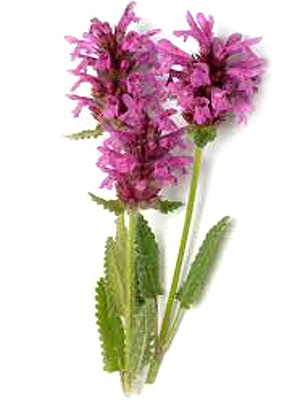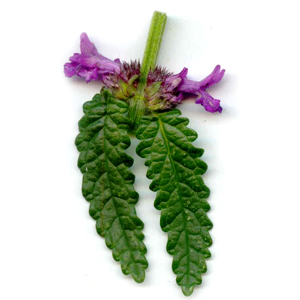No products
Purple betony - 50g
(Herba Betonicae officinalis)
Purple betony (Betonica officinalis) is effective against lung diseases, inflammation of the lungs and phlegm. In combination with hyssop medical the treatment of asthma. In combination with a spiny restharrow against sand and deadening in the kidneys and bladder. Supportive agent in the treatment of epilepsy...
![]()
Content |   |
Folk nameBetony, Purple betony, Wood betony, Bishopwort or Bishop's wort Latin (botanical) nameBetonica officinalis StorageStore in a dry place at a temperature up to 25°C |
Description of herb
Purple betony (Betonica officinalis), a thermophilic, coarsely hairy herb, 20 to 80 cm tall, grows on alkaline to weakly acidic soils from southern Scandinavia to North Africa and east to the Urals and Caucasus.
It was already known to the ancient Romans, who used it as a universal remedy, as evidenced by their proverb, "Sell a coat and buy a beech". In the Middle Ages, it was considered a sacred plant because it is one of the best natural remedies for colds, depression, migraines and sunshine diseases.
For medicinal purposes, the stem (Herba betonicae) is used, which is best collected at the beginning of flowering.
Healing effects
It works very well against lung diseases, especially in pneumonia, congestion, but also in colds, cold catarrh, headaches and especially against migraines.
It is extremely effective in combination with Hyssop in the treatment of asthma.
In combination with Spiny restharrow, it is an effective remedy against sand and stones in the kidneys and bladder.
It is recommended as an adjunct in the treatment of epilepsy, nerve disorders and Parkinson's disease.
Externally, it is used to wash heavily healing wounds.
Active substances
- tannins
- essential oils
- bitterness
- betaine
- choline
- volatile oil
- tannic acid
- stachydrin and other substances
Properties
Anti-inflammatory, antiasthmatic, anti-tumor and anti-rheumatic.
Recommended at
- lung diseases
- migraine
- asthma
- diseases of the digestive system with inflamed and congested mucosa (bloody diarrhea)
- dyspeptic syndrome caused by poor quality of gastric juices
- inflammation in areas of the urogenital tract
- neurosis
- upset
- insomnia
- depressed
- mild epilepsy
Preparation and dosing
TEA
Preparation: Boil 1 tablespoon of herb with 1/4 liter of boiling water and let it infuse for 20 minutes.
Dosing: Use 2-3 times a day for problems with the nervous system and over-acidified stomach.
SYRUP
Preparation: Boil 1500 g of herbs, 500 g of sugar and water to a syrupy consistency.
WINE: Mix 1 liter of quality dry wine with 120 ml of 38% alcohol, add 60-80 g of beech tops, close and leave to stand in a warm place for 2 weeks. Then drain and use 1 liqueur glass with each meal.
Side effects
No side or adverse effects.
REMEMBER: Tell all your health care providers about any complementary health practices you use. Give them a full picture of what you do to manage your health. This will help ensure coordinated and safe care.

